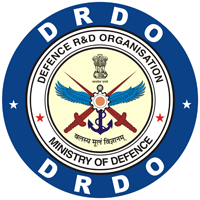Armour Protection and Affordable Protection for Futuristic Combat Vehicles
DOI:
https://doi.org/10.14429/dsj.61.365Keywords:
Ceramic armour, composite materials, metals, combat vehicles, bulging armour, electromagnetic armour, dynamic armour, intelligent armour, active protection systemAbstract
Protection creates a shift in the internal paradigm of the soldier and leads to multiplied psychological stamina for moving fearlessly in the battlefield which generates a major force-multiplier effect. Hence, the mechanized forces are still likely to be one of the dominant forces on the futuristic battlefield and would be the primary target of enemy forces capable of engaging from tank guns up to 4-5 km in a direct fire mode and up to 8-10 km in an indirect fire modes. Increased protection is possible only using advanced armour technology. Throughout the history of warfare, materials technologies have had a significant impact on land-combat force capabilities. Armour materials have progressed through improvements in metallic systems and development of advanced, lightweight (low areal density) composite materials. The advancements in ceramic systems have further improved the performance. Similarly, the advances in development of explosive reactive armour has generated efficient armour system against all contemporary high explosive antitank (HEAT) ammunition and missile threats for armoured vehicles. Yet, to achieve armour performance exceeding that of the current light combat vehicles and main battle tanks for new vehicular systems, weighing significantly less than the present combat vehicles, advances in new armour materials, systems, and survivability technologies are required. This paper describes various approaches and advancements in the metallic, ceramic, and composite armour materials and new dynamic armour systems that are essential to improve the survivability of armoured vehicles in the futurisitic multi-spectral battlefied scenarios.
Defence Science Journal, 2011, 61(4), pp.394-402, DOI:http://dx.doi.org/10.14429/dsj.61.365
Downloads
Published
How to Cite
Issue
Section
License
 Where otherwise noted, the Articles on this site are licensed under Creative Commons License: CC Attribution-Noncommercial-No Derivative Works 2.5 India
Where otherwise noted, the Articles on this site are licensed under Creative Commons License: CC Attribution-Noncommercial-No Derivative Works 2.5 India

